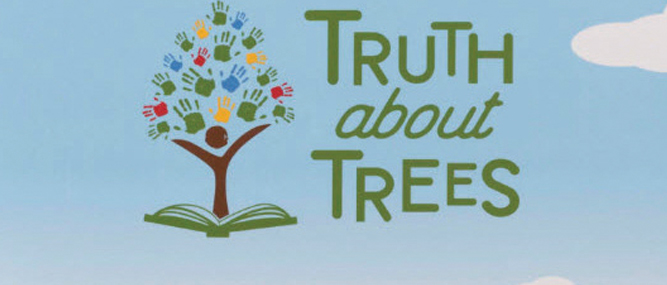The forest products industry has a lot of positive facts and figures it can share with people who might be skeptical about buying or using products made from wood. That skepticism may be rooted in the mistaken idea that it is somehow ‘bad’ to cut down trees, an image that’s been fostered by some environmentalists.
If you find yourself marketing to a business or customer or encounter someone who has some reservations about wood products, we present just a few of the following facts below.
They come from the North American Forest Foundation (formerly the Hardwood Forest Foundation). More specifically, the information is part of the foundation’s Truth About Trees teaching kit. Truth About Trees is designed to provide lesson plans and tools for elementary school teachers. These plans and tools make learning science-based facts about trees fun for children. They can be used alone or along with a field trip to the foundation’s traveling museum exhibit, Forever Forest.
Truth About Trees teaches children all about sustainable forestry and the everyday products that come from trees. Teachers get tiered lesson plans, a story book, a DVD, a wood products school supply scavenger hunt, wooden pencils, stickers, and flashcards featuring several everyday items made from trees. And teachers can replenish their kit every year.
Here are some of the nuggets from the ‘Tree and Wood Facts’ that go into Truth About Trees (below). These and more are available on the North American Forest Foundation website (www.northamericanforestfoundation.org).
— Countries whose industries consistently use large quantities of wood are more likely to maintain their forest base.
— The forest products industry employs about 900,000 Americans and manufactures over $200 billion in products every year, accounting for about 4% of the total U.S. manufacturing Gross Domestic Product.
— Most of the water we drink in the U.S. comes from forests.
— The U.S. has 738 million acres of forestland. Total forest growth has exceeded the amount harvested each year since the 1940s. In fact, the U.S. still has 70% of the forest land it had in pre-colonial times; the decline in forest land area stabilized shortly after 1900, following the end of widespread clearing to create agricultural land, and it has remained relatively constant since.
— Each year 1.7 billion trees are planted in the United States. That’s more than five trees for every man, woman and child in America – an average of 4.8 million seedlings each day.
— More than 58% of America’s timberland is owned by non-industrial private landowners. Twenty seven percent of the timberland consists of public lands and national forests, while 14% is owned by the forest industry.
— Forest management enhances biodiversity after harvest. It provides a mosaic of forest types and age classes across the landscape, and it benefits a broader range of plants and animals than does any single habitat type – including old-growth forests.
— Lumber manufacturing consumes just 4% of the energy used by all raw materials manufacturers. Steel and concrete manufacturers consume 56%. A steel stud requires 21 times as much energy to produce and releases 15 times the sulfur dioxide as a wood 2×4. Producing concrete emits up to three times more carbon dioxide, carbon monoxide, and hydrocarbon than lumber production.
— The average tree takes in 1.4 pounds of carbon dioxide and gives off a pound of oxygen for every pound of wood grown. And a half an acre of forest can absorb the carbon dioxide given off annually by a car with average mileage.
— Wood is recyclable, biodegradable and durable – sometimes lasting for centuries. And it is a renewable natural resource — trees naturally regenerate or can be replanted. Natural resources such as iron ore, coal and limestone, once removed, are gone forever.
Since its inception, the Hardwood Forest Foundation has been helping to educate elementary-age children about the benefits of the hardwood industry. Now, as the North American Forest Foundation, it will continue that mission and build on it. The foundation will be introducing a more age-inclusive curriculum that includes materials that relay the wealth of career opportunities for young adults in the hardwood and softwood industries.
The updated mission of NAFF is to support the forest products industry through education, promotion and advocacy of science-based facts about sustainable forestry.
The North American Forest Foundation has no membership. Instead it relies on the contributions of over 600 individuals, businesses and organizations.
To learn more about the foundation or to support it financially, contact executive director Jennifer Reith at (901) 860-4131 or j.reith@hardwoodforest.org.




